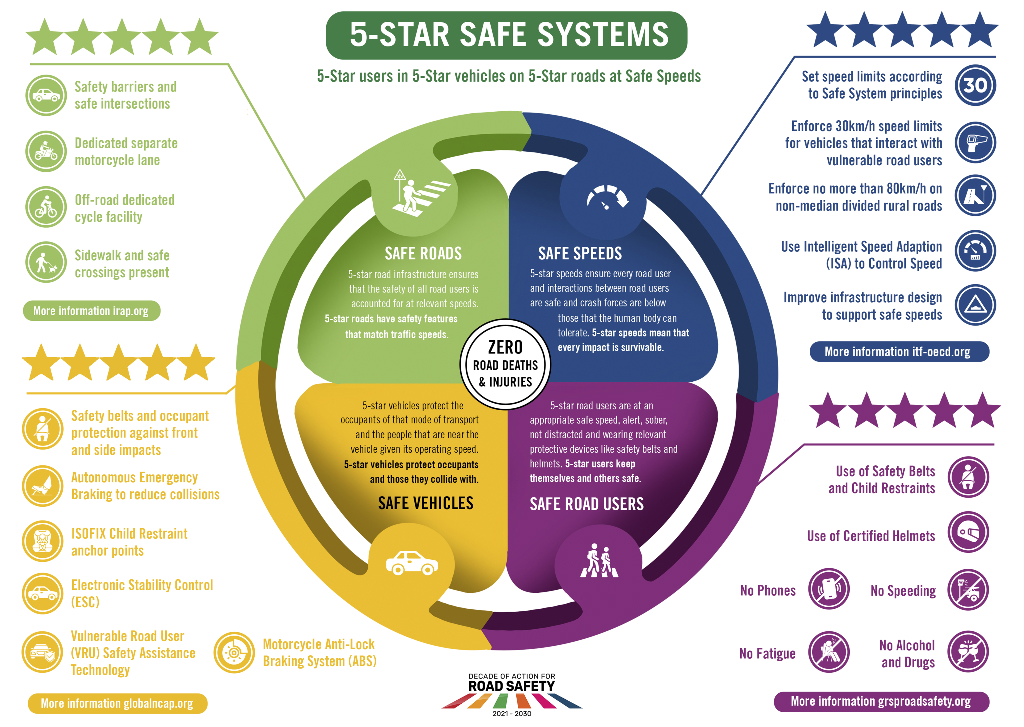Moving upwards: Be ambitious!
As one starts the journey towards the Safe System, recognition of the need to change must occur. Often at this stage it is difficult to understand the scope and scale of the problem as key performance indicators do not exist, making assessment difficult.
Standards, guidelines and performance criteria are incomplete and not geared toward the Safe System. Processes for decision making are not linked or consistent with achieving sustained progress.
In the starting stage, alignment towards the six pillars and five key components occurs. To this end, a gap analysis of needs within the six pillars is useful. Organisational structuring is necessary to identify roles and responsibilities. Developing an understanding of intended performance and needs means that strategies and action plans for advancement can be developed.
It is also important at this step to understand the resources, culture, and capabilities of the workforce. Advancement requires competencies and understanding of the processes, procedures, and policies to be institutionalised in a Safe System.
Starting the journey toward the Safe System requires an ability to scientifically assess performance and plans and strategies for future advancement in place. In the emerging stage, processes, policies, and procedures are still evolving as decision-making processes continue to change.
The developing stage sees the linkages required for a Safe System embedded in policy making and institutions with seamless operation. In this stage, multiple disciplines and actors are involved with effective institutional governance.
Importantly, this governance operates at the different levels necessary to overcome impediments to success and to provide oversight within the framework.
In the advancing stage a culture is in place of working together towards the common goal of eliminating road deaths and serious injuries from traffic crashes. Resources and competencies exist for implementation at all levels and across all public and institutional players.
As the Safe System journey advances to a mature stage, the interconnected institutional framework and public support will enable a highly sophisticated approach to road safety. Demand for technical and public policy interventions is high. Safety is paramount in decisions related to mobility for all road users and safety practices are consistent with the Safe System.
Having set the performance criteria and mechanisms in place in the early stages, accountability of performance outcomes is strong and improvements are made to increase the effectiveness, efficiency, and quality of safety outcomes. Expectations are also high, as the goal of zero fatalities and serious injuries comes closer - the ultimate realisation of the Safe System.
The basic idea behind the Safe System approach is to exploit synergies in addressing systemic flaws simultaneously. Hence, in general, spreading experience from one pillar or key component sideways towards other pillars or key components, is preferable to solely improving upward in an isolated cell of the framework. There are in general two ways of doing this within the framework: Spreading from one key component to another within a pillar, or addressing a key component across different pillars. We discuss both options below.
 5-Star users in 5-Star vehicles on 5-Star roads at Safe Speeds
5-Star users in 5-Star vehicles on 5-Star roads at Safe Speeds